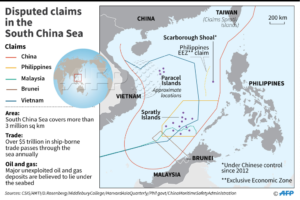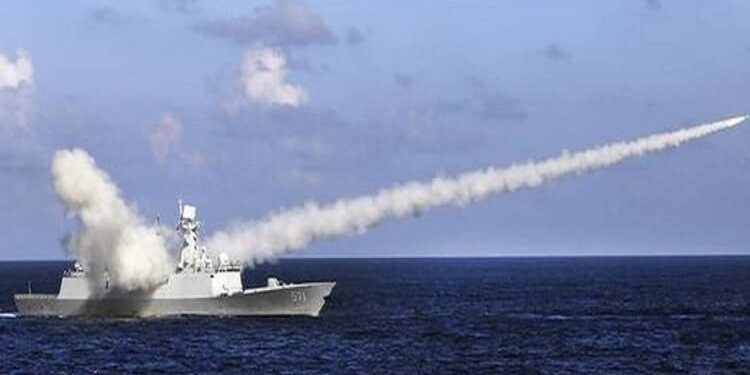In News
The South China Sea is a vast area measuring 3.6 million square kilometres, more than double the size of the Gulf of Mexico. China’s claim to the sea is based on its so-called “nine-dash” line. This line extends for 2,000 kilometers from the Chinese mainland, encompassing over half of the sea.
History of Conflicts
- In 1982, the UN Convention on the Law of the Sea was adopted and signed, formalising extended maritime resource claims in international law. At this time, no fewer than six governments had laid claim to the disputed Paracel and Spratly islands in the South China Sea.
- Since then, there has been a creeping militarisation of the waters by nations seeking to secure extended maritime resource zones. In 2009, Vietnam began reclaiming land around some of the 48 small islands it had occupied since the 1970s.
- In response, China began its much larger reclamations on submerged features it first began to occupy in the 1980s. By 2016, these reclamations had resulted in three military-grade, mid-ocean airfields that sent shockwaves around the world, provoked in part by China breaking its own pledge not to militarise the islands.
- In a historic decision in 2016, an International Tribunal in The Hague ruled against part of China’s claims to the sea in a case brought by the Philippines. China rejected the authority of the tribunal and its finding in the case.
Current Status
- China’s sweeping claims of sovereignty over the sea—and the sea’s estimated 11 billion barrels of untapped oil and 190 trillion cubic feet of natural gas—have antagonized competing claimants Brunei, Indonesia, Malaysia, the Philippines, Taiwan, and Vietnam.
- As early as the 1970s, countries began to claim islands and various zones in the South China Sea, such as the Spratly Islands, which possess rich natural resources and fishing areas.
- In addition to piling sand onto existing reefs, China has constructed ports, military installations, and airstrips—particularly in the Paracel and Spratly Islands, where it has twenty and seven outposts, respectively.
- China has militarized Woody Island by deploying fighter jets, cruise missiles, and a radar system.
- Under the Law of the Sea Convention, all states have a right to a 200 nautical mile “exclusive economic zone” to exploit the resources of the sea and seabed, as measured from their land territories. Where these zones overlap, countries are obliged to negotiate with other claimants.
- The United States, which maintains important interests in ensuring freedom of navigation and securing sea lines of communication (SLOCs), has expressed support for an agreement on a binding code of conduct and other confidence-building measures.
- China’s claims threaten SLOCs, which are important maritime passages that facilitate trade and the movement of naval forces.

















